Expert Review
Hyundai i30 Hatchback (2015 - ) review
Hyundai's i30 is a very creditable - and budget-priced - alternative to the likes of the Ford Focus and Vauxhall Astra
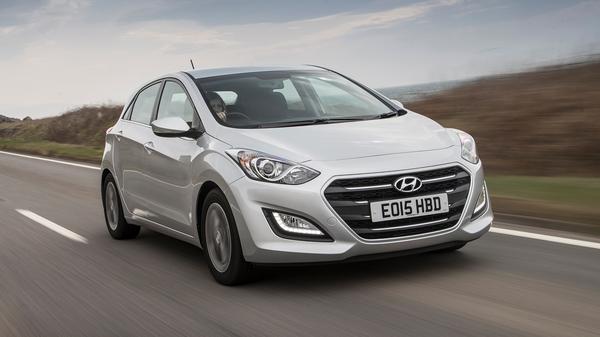

Words by: James Richardson
Last updated on 6 August 2015 | 0 min read
The Auto Trader expert verdict:
4.1
The Hyundai i30 might not be as enjoyable to drive as some rivals, but it’s an accomplished hatch that does very little wrong - and its long warranty provides plenty of reassurance.
Reasons to buy:
- Cosseting ride
- Well built interior
- Good safety rating
How good does it look?
Swooping bonnet curves, scalloped body sides, a large hexagonal grille and teardrop headlights… the i30 could almost be mistaken for a mini Hyundai i40. Base versions have to make do with steel wheels, but otherwise the i30 is a smart thing, with LED running lights, body-coloured door handles and foglights on all versions. The i30 is available as a three- and five-door hatchback, but to get the former you have to specify it with the 1.6-litre Turbo engine, and this Turbo version gets 18-inch alloy wheels.
Expert rating: 4/5
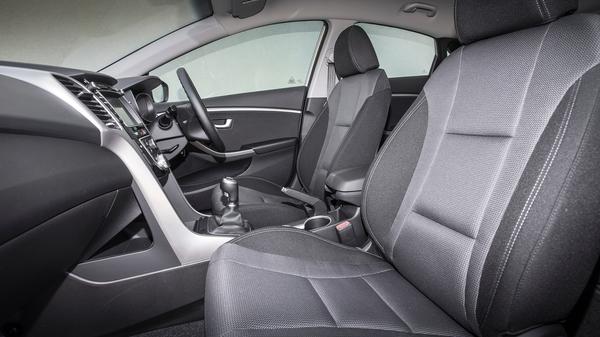
What's the interior like?
“Everything is well made and nicely fitted, and for the most part those plastics feel substantial”
As with exterior, so the interior is very similar to the i40's, which is no bad thing. There’s a swooping dashboard, and while there are lots of dull grey plastics, there’s also a smattering of metal-effect trim to brighten things up. And, if that's not enough, you can boost the light in the cabin with the optional panoramic sunroof. Everything is well made and nicely fitted, and for the most part those plastics feel substantial - although some of those lower down on the dashboard feel a little cheap. Depending on the trim level, you get manual or electric height adjustment on the driver’s seat, while higher trims add adjustable lumbar support and height adjustment for the front passenger’s seat. All-round visibility is reasonable in the five-door car, but the three-door Turbo has thick rear pillars that can make reversing a challenge.
Expert rating: 4/5
How practical is it?
Four adults will be happy sitting in the i30 for a couple of hours, and a fifth won’t feel too out of sorts in the centre rear seat, thanks to the low hump in the floor - although the storage bin between the front seats impinges on kneeroom for that middle passenger. The boot holds 378 litres with the rear seats in place, which is more than the Ford Focus's can and only just less than a VW Golf’s. Like those rivals, the i30’s rear seats can be folded flat to extend the load space; and, although the space-saver rear wheel east into the boot space to some extent, we prefer to sacrifice some space in favour of the reassurance a spare wheel brings.
Expert rating: 4/5
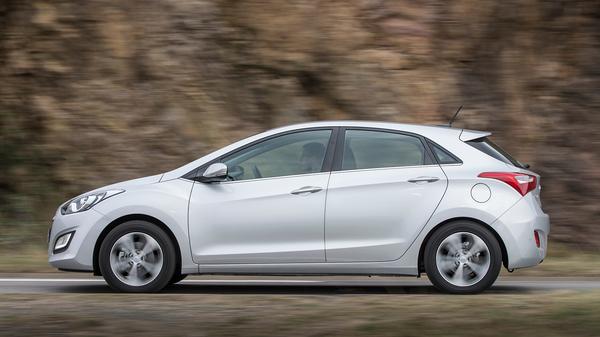
What's it like to drive?
“The ride is a little pattery at low speeds, but things soon smooth out when you head out of town”
The i30’s suspension does an impressive job of keeping occupants isolated from ruts, scars and even potholes; and, while the ride is a little pattery at low speeds, things soon smooth out when you head out of town. It does mean there’s some body roll in corners, but it’s not excessive. Instead, the steering is the i30’s biggest problem - it always feels rather vague, whichever of the three ‘Flex steer’ settings you have it in, and doesn’t inspire much confidence. However, it’s light enough to make parking a doddle. Compared to the rest of the range, the Turbo has firmer suspension, but it still does a good job of absorbing bumps and there’s very little body roll.
Expert rating: 4/5
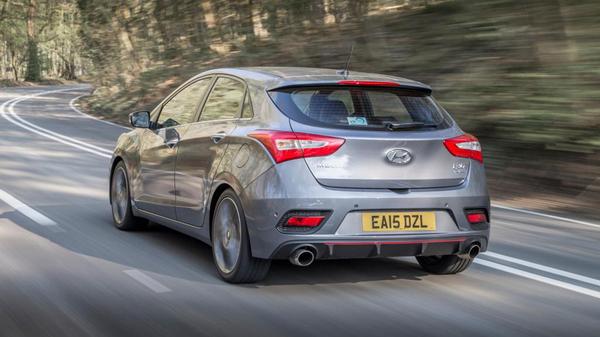
How powerful is it?
“The 1.6 Turbo is more of a warm hatch than a hot one, getting from rest to 62mph in 8.0sec”
Buyers can choose from three petrol engines (a 1.4-litre unit with 99bhp, a 1.6 with 118bhp and the 1.6 Turbo with 184bhp) and two 1.6 diesels (one with 109bhp the other with 134bhp), although not all engines are available with all trim levels. The 1.4 petrol is likely to prove the most popular, and for good reason: it's perfect for use in town yet has no trouble keeping up with traffic on the motorway. It's fairly noisy when revved, but you rarely need to do that, and its six-speed manual gearbox makes sure everything remains relaxed at speed. The 109bhp 1.6-litre diesel is a nice, refined engine and will be good for business users doing plenty of motorway miles, thanks to its impressive efficiency and low CO2 emissions. Automatic gearboxes are available as options on the 1.6 petrol and diesel engines - the latter gets a dual-clutch 'box, which can be a bit jerky at low speeds. The 1.6 Turbo is more of a warm hatch than a hot one, getting from rest to 62mph in 8.0sec. Power builds gently and you need to work the engine hard to extract decent performance from it. Its price puts it in contention with the Ford Focus ST, which is considerably quicker.
Expert rating: 4/5
How much will it cost me?
If you're a company car driver, you should take a close look at the 1.6 CRDi 110 Blue Drive, which emits only 94g/km of CO2 (with a manual gearbox) and averages an impressive 78.4mpg, officially at least. The 1.4 petrol returns 47.1mpg on average and emits 138g/km, while the lower-powered 1.6 petrol averages 42.8mpg. As you might expect, the 1.6 Turbo is a fair bit thirstier at 38.7mpg and emits 169g/km, which is the same as the hotter but similarly priced Focus ST. The i30's resale values are about on par with those of a Ford Focus, but aren't as strong as a VW Golf's.
Expert rating: 4/5
How reliable is it?
Traditionally, the i30 has had an average showing in customer satisfaction surveys, with owners praising reasonable insurance costs and the space up front, but disliking the price of servicing and the effectiveness of the air-con. Overall, Hyundais generally have a good reputation for reliability, and we can see no reason why the i30 should buck this trend. If things do go wrong, you’ve at least got the reassurance of a five-year/unlimited-mileage warranty, which is transferrable to the next owner.
Expert rating: 4/5
How safe is it?
The Hyundai i30 has been awarded a top five-star rating from crash test body Euro NCAP, with 90 per cent in both the adult and child occupant protection categories. Active safety features include Brake- and Hill Assist systems, electronic and vehicle stability management systems and brake lights which flash during an emergency stop. There’s also a tyre pressure monitoring system and six airbags fitted, with a driver's knee bag added on Premium trim.
Expert rating: 5/5
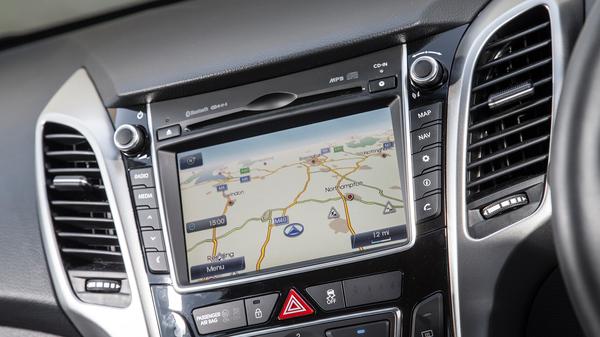
How much equipment do I get?
“All five trim levels bring a healthy amount of kit”
There are five trim levels on the i30, all bringing a healthy amount of kit. Entry level S trim gets keyless entry, a USB socket, Bluetooth with steering wheel controls, and air-conditioning as standard. Our favourite trim, SE, adds 16-inch alloy wheels, cruise control, driver's electric lumbar support, rear parking sensors, and a leather-trimmed steering wheel and gearknob. SE Nav brings touchscreen sat-nav and a rear view camera, while Premium trim adds xenon headlights, 17-inch alloys, leather-trimmed heated seats and steering wheel, climate control and smart key with engine stop/start button. The Turbo model gets alloy wheels, a bodykit, red stitching on the seats and steering wheel, sports suspension, sat-nav and LED rear tail lights.
Expert rating: 4/5
Why buy?
Hyundai has proved the i30 can compete with some of the best in the class, and this is a fine alternative to the Focus and Golf. Its reassuring warranty gives buyers peace of mind, and while it’s not the best-driving family car, it’s still pretty accomplished.
Expert rating: 4/5